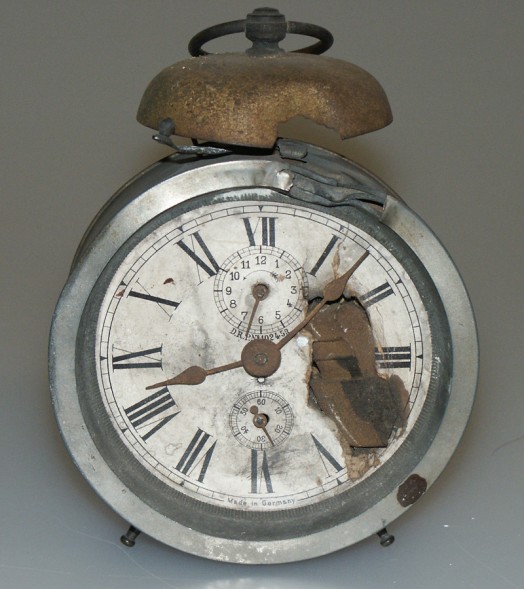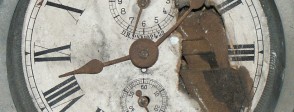
German motives for the attack on Hartlepool
One of the main causes of World War I was Anglo-German rivalry for control of the seas. Germany had greatly increased her fleet in the fifteen years before war broke out in 1914 but so had Britain. Although there were some early losses at sea on both sides, the main British fleet stayed safely in its base at Scapa Flow to the north of Scotland. The German naval attack on England’s north east coast may have been an attempt to lure groups of British warships into open battle or an act of revenge for recent German naval defeats off South America. Some suggest the aim was to encourage the British government to keep more troops at home and send fewer to France. Recently it has been suggested that the bombardment was directed at three radio stations in the town that served as a state of the art communications link for the Royal Navy.
The attack
Hartlepool was not the only coastal town to be attacked. Scarborough and Whitby also came under fire more or less at the same time, but the greatest damage and loss of life occurred at Hartlepool. Newspapers reported that it was 8.05 am on 16 December 1914 when three German warships appeared from the fog and opened fire on the port. British gun batteries above the town were immediately destroyed by the first German shells. For the next forty minutes the town and its shipyards and engine works came under fire. The clock belonged to a Mrs Farnham of 14 Collingwood Road in West Hartlepool. The clock stopped with its hands showing 8.07am although in some images the hands are stopped at 8.03am and there is a note in the museum that the hands were originally at 08.24. The shelling stopped around 8.40am. Photographs reveal the damage to buildings and even the size of unexploded shells. One summary of the three bombardments puts the total number killed at 137 with 592 casualties, but the latest research puts the number of dead at 130 including those who died on the day and those who died later due to the injuries they sustained.
Reactions and responses
The raid on Scarborough caused the greatest outrage. Hartlepool was a defended port with gun batteries and Whitby was defended by a company from the Cyclist Battalion of the Devonshire Regiment. These were legitimate targets in a time of war, but Scarborough was not. Naturally, it was Scarborough that featured heavily in the propaganda campaign that followed the attacks. Newspaper articles condemned the Germans. Funerals of victims were filmed and shown to audiences around Britain. The famous “Remember Scarborough!” poster appeared in January 1915 to encourage mass recruitment as a response to what was seen as a German war crime. Recruitment rose dramatically in that month especially in centres in the north-east.
The propaganda campaign diverted attention from criticism of the Admiralty for allowing the German ships to reach the British coast. There had already been an ineffectual German attack on Yarmouth on 3 November 1914 that alerted the Admiralty to the dangers. British ships were patrolling the north east coast but failed to block the advancing German warships or to intercept and destroy them as they returned to base.
‘Total War’
The attack on Hartlepool, Whitby and Scarborough came as a shock to Britain, but towns and cities in Belgium and France had already been demolished by shell fire by December 1914. The plight of refugees and the ever increasing demand for recruits, munitions, transport and supplies were early signs that this was to be an industrialised war in which civilians and services must each play their part. This has become known as ‘Total War’. Over the next four years, the British people in particular had to cope with intense pressure in ways that had been unimaginable in earlier campaigns. The clock is a symbol of the power of war to strike home as never before.
More information
World War One: German ships took war to England's doorstep
BBC outline account of the bombardment of Hartlepool and its wider significance in the propaganda campaign and the changing nature of war including the role of women.
http://www.bbc.co.uk/news/uk-england-25731392
The bombardment of Hartlepool
Webpage about the clock and the Hartlepool bombardment that includes a link to photographs of the damage and a video that tells the story of the attack in some detail.
http://www.westernfrontassociation.com/great-war-people/photography-original/1934-the-bombardment-of-hartlepool-16-december-1914.html
Article about the German raid on Hartlepool
Detailed account from local newspapers about the bombardment of Hartlepool with links to other articles and to a PDF file that provides even more detail and eye witness comments about Scarborough.
http://www.scarboroughsmaritimeheritage.org.uk/ahartlepool.php
The home front
Imperial war Museum story about different aspects of the Home Front with many fascinating images
https://www.iwm.org.uk/history/20-incredible-photos-from-the-first-world-war-home-front
WW1 at home
BBC home page about the Home Front in different localities with many sources including video clips and a searchable map supports local history.
https://www.bbc.co.uk/programmes/p01nhwgx
More information
-
World War One: German ships took war to England's doorstep
BBC outline account of the bombardment of Hartlepool and its wider significance in the propaganda campaign and the changing nature of war including the role of women.
Source: bbc.co.uk
-
The bombardment of Hartlepool
Webpage about the clock and the Hartlepool bombardment that includes a link to photographs of the damage and a video that tells the story of the attack in some detail.
Source: westernfrontassociation.com
-
Article about the German raid on Hartlepool
Detailed account from local newspapers about the bombardment of Hartlepool with links to other articles and to a PDF file that provides even more detail and eye witness comments about Scarborough.
Source: scarboroughsmaritimeheritage.org.uk
-
The home front
Imperial war Museum story about different aspects of the Home Front with many fascinating images
Source: iwm.org.uk
-
WW1 at home
BBC home page about the Home Front in different localities with many sources including video clips and a searchable map supports local history.
Source: bbc.co.uk


